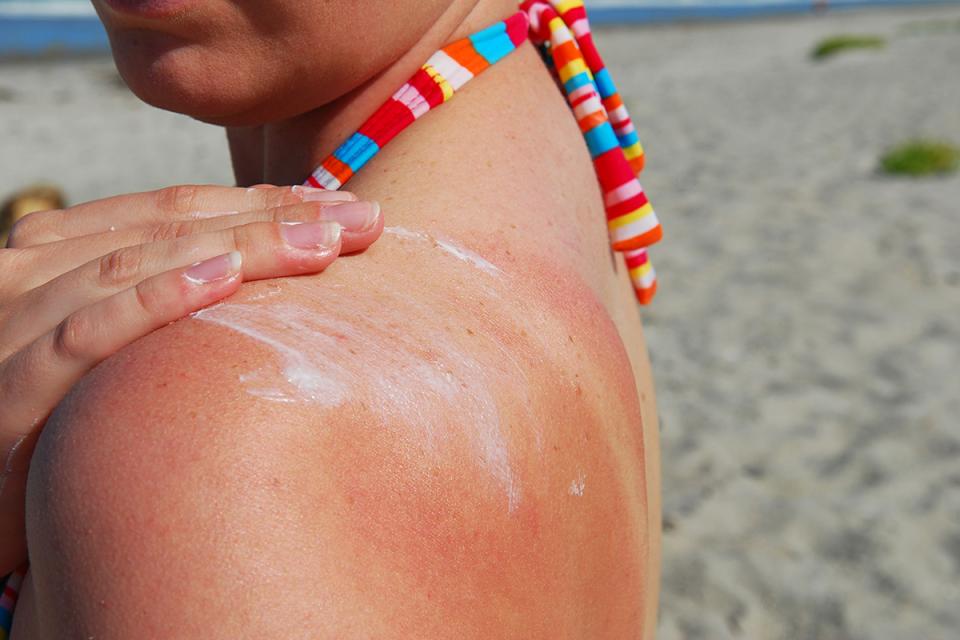Take care of and protect your skin
Here are a few things you can do to take care of and protect your skin from harmful UV rays:
- Avoid tanning beds
- Use a water-resistant broad-spectrum UVA/UVB SPF 30 (or higher) sunscreen
- Apply 15 minutes before going outside
- Cover often missed areas such as the scalp and ears
- Reapply every two hours
- Wear protective clothing such as hats or sleeves
- Take zinc
- It is no substitute for applying sunscreen or covering up, but it could give you some breathing room if you can’t get back to apply your sunscreen, or if you have super fair skin that always burns
How to find relief
Here are some tips to help you get some relief and heal faster:
- Stay out of the sun until fully healed
- Cool compresses
- Cool showers or baths
- Lotions with aloe vera or lidocaine
- Drinks a lot of water and electrolytes
- Replacing lost fluids will help you heal faster
- Moisturize regularly to keep the skin hydrated
- Hydrocortisone cream may help relieve itching and swelling
- Do not pick at peeling skin
- Reduce inflammation and pain by taking a pain reliever
- Ease itching by taking an antihistamine
Leave no stone unturned
Melanoma, the most common type of skin cancer, is caused by too much exposure to UV rays. Did you know a person’s risk for melanoma doubles if they have had more than five sunburns in their life? The good news: if you use sunscreen daily with an SPF of 30 or greater, you reduce the risk of developing melanoma by 50%.
Thoroughly check yourself every month or so for anything that looks weird or different on your body. Especially if any odd lumps or moles form or change shape. If you notice anything different, contact your dermatologist.
“I highly recommend being seen by a dermatologist to screen for skin cancers,” says Andrew Newman, DO, board-certified dermatologist and an independent member of the HonorHealth medical staff. “No one is immune from getting a skin cancer, but you should continue to enjoy all the things you like to do, as long as you are screened regularly and diligently protect your skin.”
Skin health simplified
Stay ahead of skin issues with a simple annual exam. Regular screenings, daily sunscreen and checking for changes can make a big difference. Get ready to give your skin the care it deserves.
Sizzle-free skin
Ready to enjoy the sun? This insightful Q&A offers expert tips on sunscreen, sun protection and when you should see a dermatologist — keeping your skin safe while you bask in the sunshine.
Essential skin cancer truths
Your skin is your canvas — keep it healthy and glowing with these eight key tips from our expert dermatologists. Protect it from damage, care for it daily and it will thank you.
